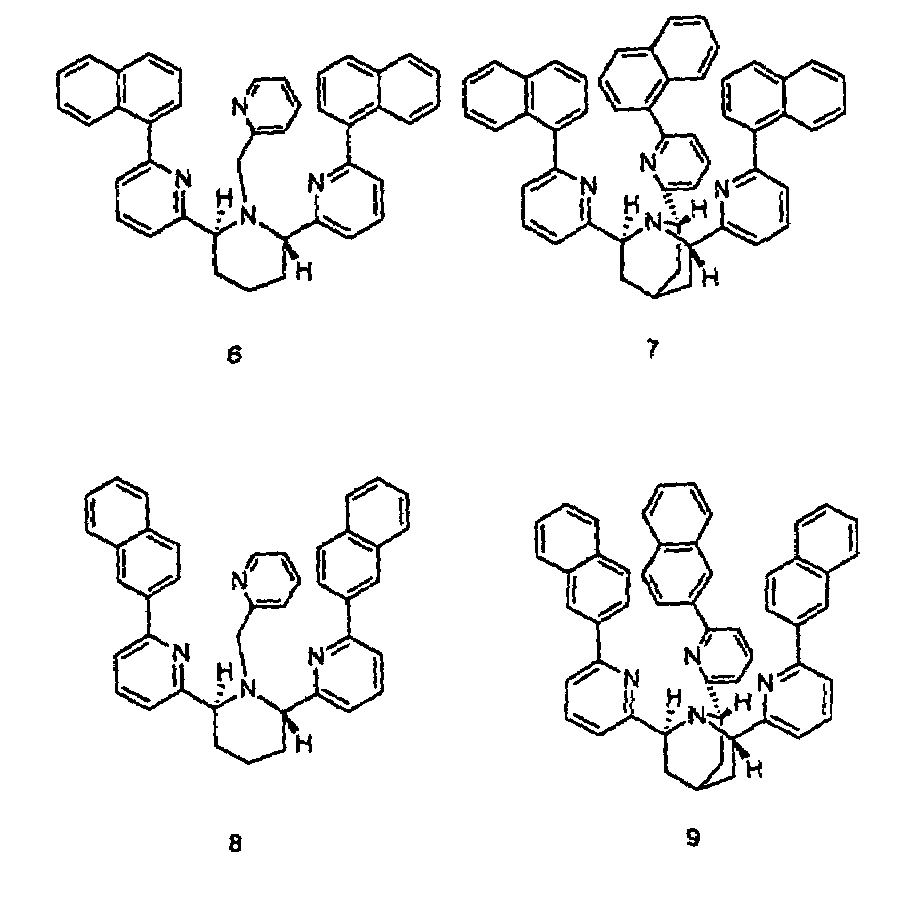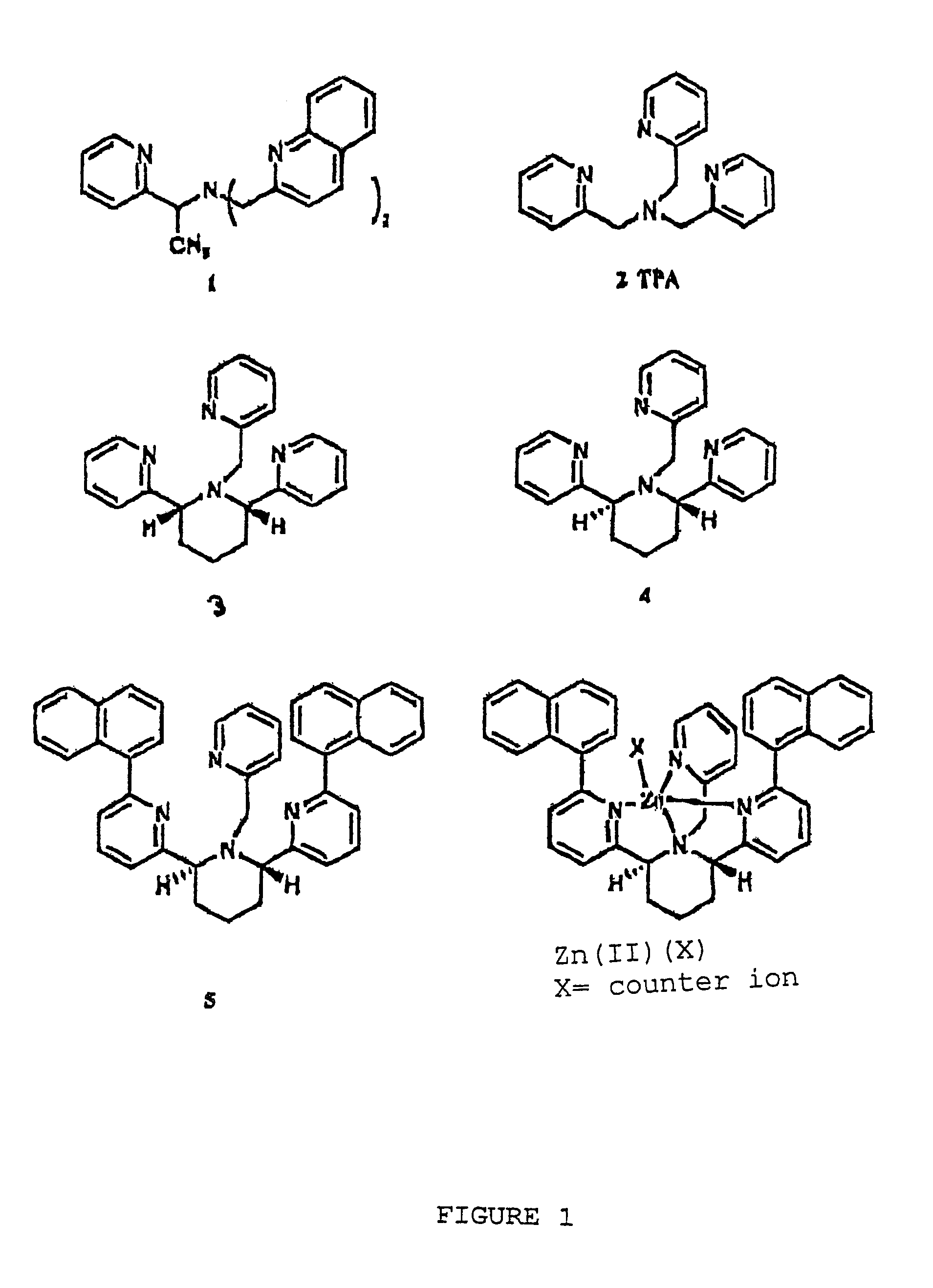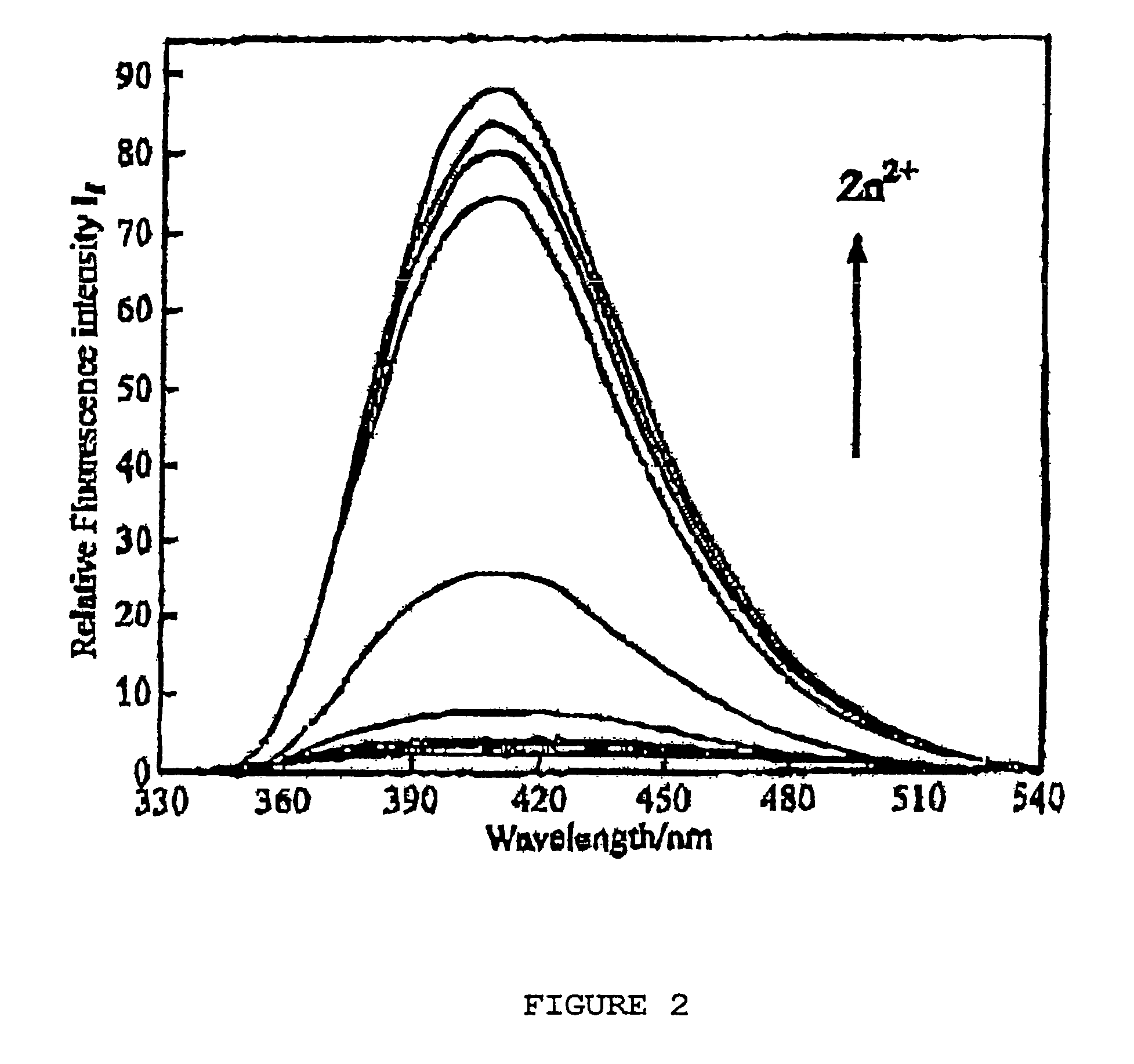Chiral piperidine and quinucledine ligands
a ligand and piperidine technology, applied in the field of chiral piperidine and quinucledine ligands, can solve the problems of other metal ions' interference, and achieve the effect of increasing the rigidity of the ligand scaffold
- Summary
- Abstract
- Description
- Claims
- Application Information
AI Technical Summary
Benefits of technology
Problems solved by technology
Method used
Image
Examples
Embodiment Construction
[0028]Compounds 3 and 4 were prepared as described by X. Xu in a Ph.D. dissertation at New York University, 2000. The binding constants were determined by potentiometric titration as described in Martell et al., 1992. For the cis-piperidine derivative, compound 3, Cu(II) and Zn(II) gave log β=14.8 and 10.1, respectively. For the trans-ligand, compound 4, the numbers were found to be 12.0 and 11.2, respectively. The parent compound TPA, compound 2, shows log β=16.15, compared to 11.00 for Zn(II) (Anderegg et al., 1977). Thus, the ratios of the association constants for binding Cu(II) over Zn(II) of compounds 2, 3, and 4 are 1.4×105, 5×104, and 6, respectively. While the cis-ligand, compound 3, showed diminished binding for both Cu(II) and Zn(II), the trans-ligand, compound 4, showed even worse binding of Cu(II) but slightly stronger binding of Zn(II) over TPA.
[0029]The differences in stability were estimated using PM3 / tm calculations of the heat of formation of the [M(L)Cl]+(M=Cu(II)...
PUM
| Property | Measurement | Unit |
|---|---|---|
| wavelength | aaaaa | aaaaa |
| pH | aaaaa | aaaaa |
| fluorescent | aaaaa | aaaaa |
Abstract
Description
Claims
Application Information
 Login to View More
Login to View More - R&D
- Intellectual Property
- Life Sciences
- Materials
- Tech Scout
- Unparalleled Data Quality
- Higher Quality Content
- 60% Fewer Hallucinations
Browse by: Latest US Patents, China's latest patents, Technical Efficacy Thesaurus, Application Domain, Technology Topic, Popular Technical Reports.
© 2025 PatSnap. All rights reserved.Legal|Privacy policy|Modern Slavery Act Transparency Statement|Sitemap|About US| Contact US: help@patsnap.com



